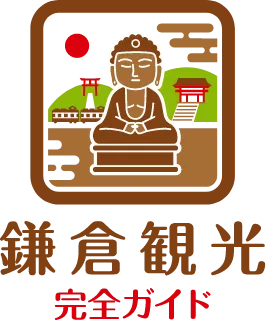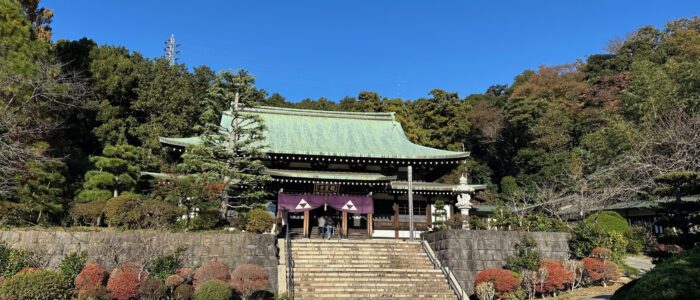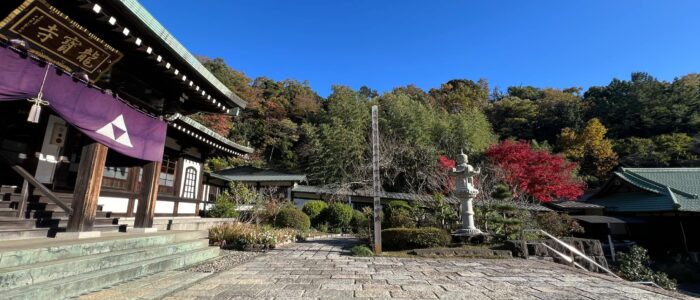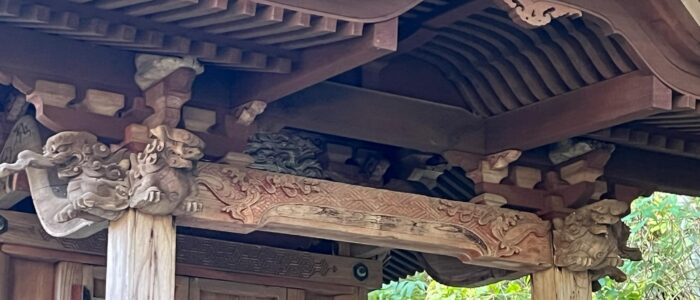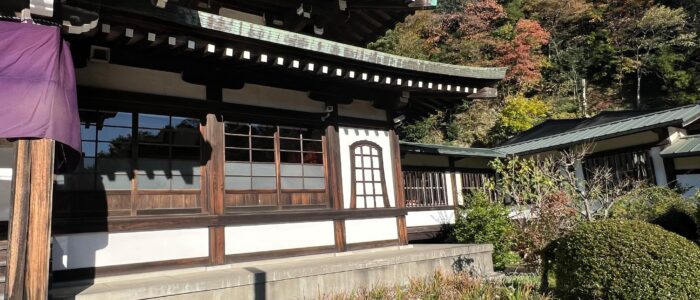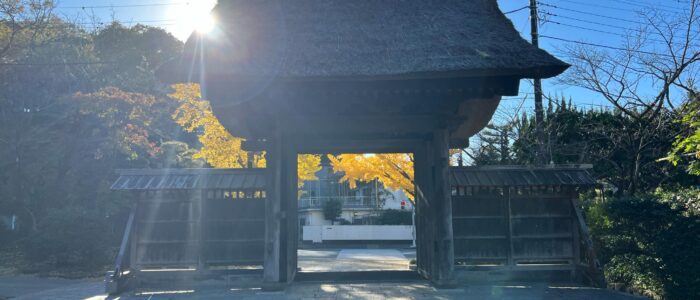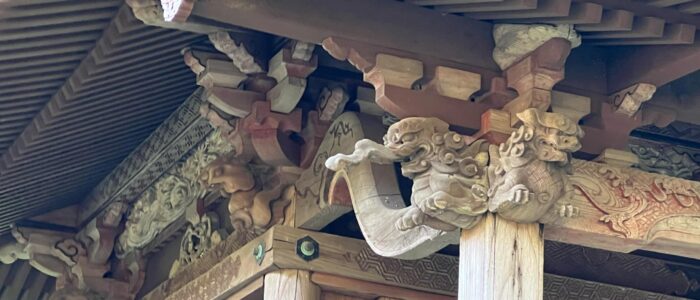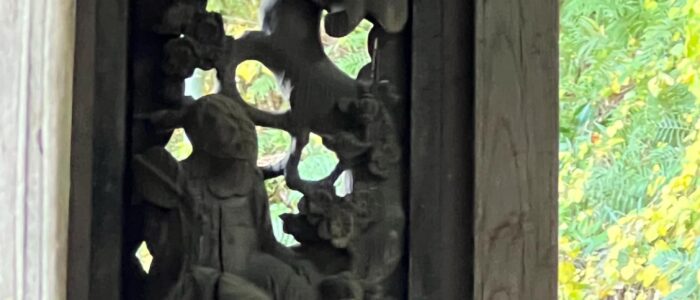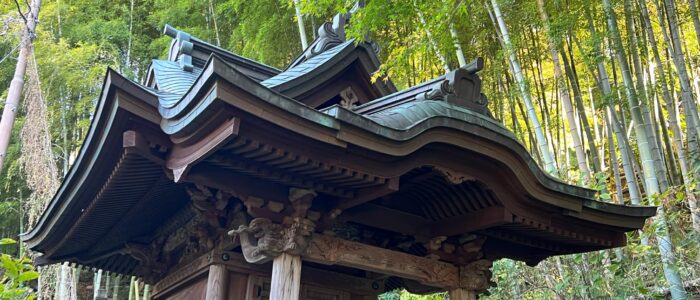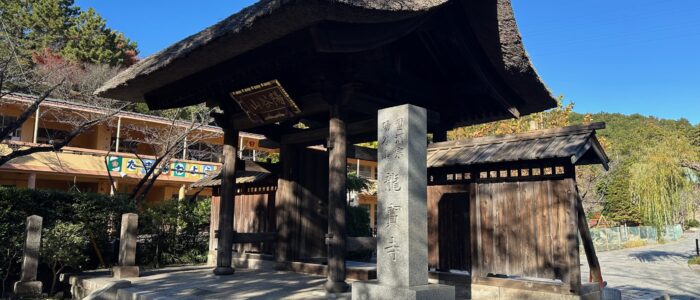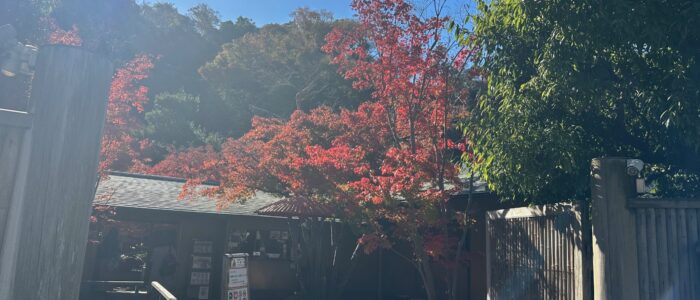Ryuho-ji Temple (龍宝寺)
Discover Ryuho-ji Temple (龍宝寺)
Located near Ōfuna Station (大船駅) in Kamakura (鎌倉), Ryuho-ji was originally founded as Zuiko-in (瑞光院) in the early 16th century by Hojo Tsunanari (北条綱成), the lord of Tamanawa Castle (玉縄城). Later, Hojo Ujikatsu (北条氏勝) moved it to its present location to honor his father Hojo Ujishige (北条氏繁), renaming it Ryuho-ji. As the family temple of the Tamanawa branch of the Later Hojo clan (後北条氏), it has been deeply connected to the region’s history as a temple of the Soto school (曹洞宗).
What Makes It Special: Scenery, Architecture, and Nature
The grounds feature a thatched-roof gate with a dignified presence and a solemnly rebuilt main hall. Inside are three Buddhist statues centered around Shaka Nyorai (釈迦如来), and a wall of 500 Rakan statues (羅漢像) that draws visitors into the quiet world of Buddhist imagery. Beyond the gate lies a view of Suwadan (諏訪壇), believed to be the site of the former Tamanawa Castle (玉縄城), where traces of the Sengoku period still linger.
Spiritual Blessings and Cultural Significance
Ryuho-ji preserves the memorial tablets of Hojo Tsunanari (北条綱成), Hojo Ujishige (北条氏繁), and Hojo Ujikatsu (北条氏勝), successive lords of the Tamanawa Hojo family (玉縄北条氏). A tablet honoring Minamoto no Sanetomo (源実朝), the third shogun of the Kamakura Shogunate (鎌倉幕府), is also enshrined here. For those seeking peace of mind, the atmosphere offers a calm, reflective experience.
Local Flowers and Seasonal Experiences
Ryuho-ji is also known for its seasonal flowers. In spring, Somei Yoshino cherry trees bloom alongside peach and pear trees, creating a dreamlike garden. The temple is especially famous for its peonies, which are joined by cornflowers and scilla in vibrant displays. In autumn, the large ginkgo tree by the gate turns golden, offering a striking and photogenic scene.
Omikuji, Goshuin, and Traditions
Goshuin (temple stamps) can be received at the office or living quarters, though availability may vary—calling ahead is recommended. In the temple grounds, a stone monument engraved with “Kinkunshu (禁葷酒)” reflects Buddhist etiquette and discipline. Time spent appreciating such quiet customs brings peace to the heart.
Access and Opening Hours
From JR or Shonan Monorail Ōfuna Station (大船駅), it’s about a 15-minute walk to Ryuho-ji. Alternatively, take a Kanagawa Chuo Bus bound for Fujisawa, get off at Uekiyato (植木谷戸), then walk 3 minutes. Using a map app beforehand is advised. The temple is open daily from 8:00 AM to 5:00 PM and has on-site parking.
Best Time to Visit
Ryuho-ji welcomes visitors year-round with its quiet floral beauty. Spring brings cherry blossoms and peonies, while autumn showcases golden foliage. As it is not a major tourist site, you can enjoy a calm and uncrowded atmosphere at any time.
Nearby Spots Within Walking Distance
Around Ryuho-ji are small local shrines and green valley paths loved by nearby residents. A short walk leads to Ofuna Kannon-ji Temple (大船観音寺), where a towering white statue of Kannon stands in peaceful contrast to the bustle of Kamakura (鎌倉).
Recommended For
- History enthusiasts interested in the Sengoku and Hojo lineage
- Visitors seeking a peaceful alternative to crowded tourist areas
- Seasonal flower lovers looking for understated natural beauty
- Guests at Tosh’s Place (トシズプレイス) who want flexible, quiet visits in the morning or evening
Wrap-Up: A Quiet Historical Gem Near Tosh’s Place
Ryuho-ji is a hidden temple slightly removed from central Kamakura (鎌倉), offering a serene atmosphere steeped in history and nature. Rather than a quick stop, it’s a place meant for unhurried reflection.
Staying at Tosh’s Place (トシズプレイス) allows you to visit early or late in the day, making the most of your time in Kamakura with a flexible, local-style stay. Enjoy a peaceful walk among the blossoms and ancient stones of Ryuho-ji.
